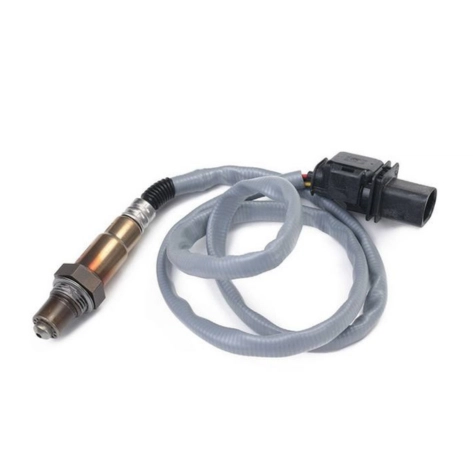This blog is about the P0150 code and its connection to the O2 sensor of Bank 2. The P0150 code is an important diagnostic trouble code (DTC) that tells about an issue with the oxygen sensor in Bank 2 of your vehicle’s engine. When the P0150 check engine light code is triggered, it can lead to problems like reduced fuel economy, rough idling, and increased emissions.
But fear not; in this complete guide, we’ll explore the P0150 code in detail, covering its causes, symptoms, diagnostic procedures, and step-by-step instructions for replacing the faulty O2 sensor. We’ll also provide maintenance tips to help prevent future issues.

Understanding the Oxygen Sensor
Oxygen (O2) sensors are critical components in a vehicle, playing a key role in the engine’s fuel management system. These sensors are designed to monitor the oxygen levels in the exhaust gasses and provide feedback to the Powertrain Control Module (PCM) to adjust the air-fuel mixture accordingly. There are typically two types of oxygen sensors in a vehicle:
Upstream O2 Sensor
- Located before the catalytic converter
- Monitors the air-fuel mixture directly from the engine
- It helps the PCM determine the correct amount of fuel to inject based on the oxygen content in the exhaust gasses.
Downstream O2 Sensor
- Located after the catalytic converter, typically underneath the vehicle
- Monitors the efficiency of the catalytic converter
- It helps the PCM detect any issues with the catalytic converter or the overall exhaust system, such as catalytic converter failure or improper exhaust system operation.
The terms “upstream” and “downstream” refer to the direction of exhaust flow, not the physical location of the sensor on the engine.
A properly functioning oxygen sensor is important for several reasons:
Fuel Efficiency: The oxygen sensor helps optimize fuel consumption by maintaining the ideal air-fuel ratio, resulting in better gas mileage.
Emissions Control: The O2 sensor helps reduce harmful emissions and ensures efficient combustion.
Engine Performance: An accurate air-fuel mixture, regulated by the oxygen sensor, enhances engine power and responsiveness.
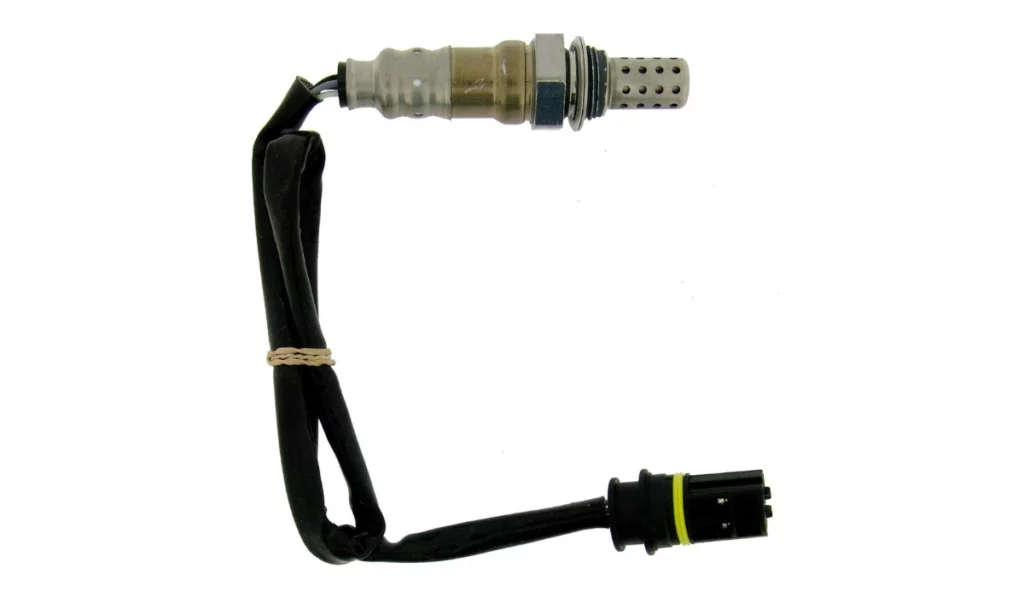
Understanding the P0150 Code: A Common Yet Crucial DTC
The P0150 code is an On-Board Diagnostic (OBD-II) trouble code that concerns the engine’s O2 sensor in Bank 2. In most vehicles, Bank 2 refers to the side of the engine that does not house cylinder number one.
This specific code relates to sensor 1. Oxygen sensor 1 in Bank 2 translates to the upstream O2 sensor before the catalytic converter. It monitors the exhaust gasses before they pass through the converter. Its main job is to help the PCM decide how much fuel the engine needs by checking the oxygen levels in the exhaust.
How does the P0150 code trigger?
Like other oxygen sensors, O2 sensor 1 generates a voltage signal based on the difference in oxygen levels on exhaust gasses. PCM uses this signal to adjust the fuel delivery system, ensuring optimal combustion and minimizing harmful emissions.
When the Powertrain Control Module (PCM) detects a signal voltage higher or lower than expected from this sensor for too long (time can vary depending on models), it prompts the P0150 code.
Symptoms of P0150 Code
Now that you have achieved a peak understanding of the P0150 code and how it triggers, let’s learn about its symptoms. When the P0150 code is triggered, it can lead to various symptoms that indicate a depleting vehicle’s performance and overall driving experience.
Check Engine Light
The most evident symptom of the P0150 code is the illumination of the check engine light (CEL) or malfunction indicator lamp (MIL) on the dashboard. These indicator lights can either remain steady or flash. Either way, they signal a problem that requires attention. An OBD-II scanner confirms the existence of these particular Diagnostic Trouble Codes (DTCs) stored in the Powertrain Control Module (PCM).
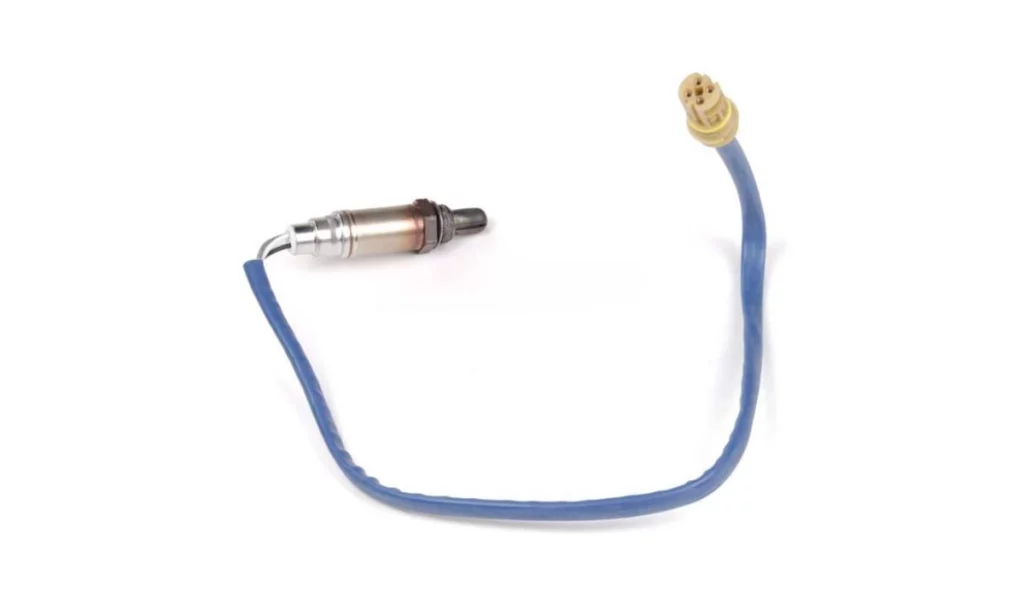
Reduced Fuel Efficiency
When you get the P0152 code, the engine performance gets compromised, and you feel underpowered. To get the usual acceleration, you’ll have to press the gas pedal harder. Pressing harder makes the engine demand more fuel. Without a proper air supply, that extra fuel does not combust fully. This incomplete combustion wastes fuel, leading to higher fuel consumption and reduced fuel efficiency.
Rough Idling
If the O2 sensor is not working right, it can mess up the air and fuel mixture in the engine. When the air-fuel ratio is not balanced, the engine may idle roughly or unevenly. The PCM needs precise readings from the O2 sensor to work properly and ensure a smooth operation. A faulty oxygen sensor hinders the PCM’s ability to achieve optimal idling conditions.
Reduced Engine Performance
The P0150 code indicates a problem with one of the oxygen sensors in your engine. This issue disrupts the balance of fuel and air and causes the engine to perform poorly. You might notice your car struggling to accelerate, experiencing a loss of power, or feeling like it’s not running smoothly. Overall, it significantly affects your vehicle’s performance.
Increased Emissions
When the O2 sensor in Bank 2 is not functioning correctly, the engine can run with an improper air-fuel mixture, leading to incomplete fuel combustion. This eventually causes increased exhaust emissions, which can result in your vehicle failing an emissions test.
Can I Still Drive with a P0150 Code?
Driving with a P0150 code is generally safe but not recommended for a longer period; it’s best to address it quickly. The code indicates a potential O2 sensor issue affecting air-fuel mixture and emissions. While immediate harm is unlikely, prolonged driving with this code can lead to decreased fuel efficiency and increased emissions. Regular maintenance ensures optimal performance and prevents further damage.
Causes of the P0150 Code
You should also know why your dashboard displays a check engine light and prompts you to diagnose it, finding out that the P0150 code is activated. Several causes can trigger the P0150 code and interfere with Bank 2’s oxygen sensor’s ability to function properly. Let’s examine them now.
Faulty O2 Sensor
The most obvious reason for the P0150 code to appear is a faulty oxygen sensor. Over time, the oxygen sensors get damaged and lose their ability to function. When the O2 sensor goes bad, it may give the PCM the wrong intel about the air-fuel mixture. This can result either in a lean (too much air than fuel) or rich (too much fuel than air) mixture, leading the engine to run poorly in both cases. Replacing the faulty sensor can help the engine run better and improve fuel efficiency.
Wiring and Connectors Problem
When the wiring and connectors linking the O2 sensor to the PCM get damaged, frayed, or disconnected, they disrupt the communication between the sensor and the PCM. The PCM may receive incorrect or incomplete data from the sensor, leading to issues like poor engine performance or increased fuel consumption. Checking and repairing damaged wires or connections can resolve the problem and ensure accurate sensor readings.
Imbalance Air Fuel Mixture
Another reason the P0150 code pops up is an imbalance in the air-fuel mixture. This imbalanced mixture shows that the engine is either receiving too much fuel compared to the air or too little fuel compared to the air intake.

This can happen due to issues in the fuel system, such as the fuel injector and fuel regulator, or the air intake system, such as the air filter and intake manifold. When there’s an imbalance, whether the engine runs rich or lean, it affects the composition of exhaust gasses. The oxygen sensor detects this imbalance and sends a signal to the PCM, which triggers the P0150 code.
Exhaust System Leaks
Leaks in the exhaust system before the oxygen sensor can lead to the P0150 code. Exhaust system leaks happen when the exhaust pipes or connections are open or damaged. These leaks let excessive air enter the exhaust system, affecting the O2 sensor’s measurements. This disruption in the oxygen levels can cause the PCM to detect inaccurate readings, leading to the P0150 code.
PCM Failure
If all other possible issues are eliminated but the P0150 code is intact, it could be due to a rare occurrence: the PCM’s failure. The PCM is responsible for interpreting sensor data, including signals from the O2 sensor. If the PCM fails, it may misinterpret sensor readings, leading to the persistent triggering of the P0150 code.
Find Unmatched Deals on Authentic European Auto Parts
Unlock the gateway to automotive excellence with eEuroparts.com’s curated collection of genuine OEM and genuine European car parts. Our prices are strategically tailored to offer you unparalleled online deals. We’re on a mission to revolutionize the perception of European vehicle maintenance, making it accessible and affordable without compromising quality.
Our meticulously handpicked inventory perfectly matches your European vehicle’s unique requirements and the manufacturer’s exacting standards. Choose eEuroparts.com to enjoy substantial savings while embracing the unwavering quality your prized possession deserves.
Diagnostic Procedure
We have been aware of the causes behind the P0150 code until now. In the next step, we will implement a proper diagnostic procedure to address the issue. This will help effectively identify the root cause of the problem.
Check for other DTCs
First, use an OBD-II scanner to find other DTCs stored in your car’s PCM. This tool gives you a list of trouble codes the computer remembers. Don’t just look for the P0150 code; check for any other codes related to the oxygen sensor or how the engine is running. Knowing these extra codes can help you decide why you face an oxygen sensor fault or if this is just a consequential fault due to other issues.
Inspect O2 Sensor wiring and Connectors
Ensure the sensor is securely attached to the exhaust manifold. Check the O2 sensor wiring harness and connectors for any signs of damage, corrosion, or loose connections.
Perform a continuity test on the O2 sensor’s wiring. Meanwhile, check if the wiring is shorted to positive or negative. Any issue with these connectors and wiring can lead to the recurrence of the P0150 code.
Check for Exhaust Leaks
Examine the exhaust system for leaks near the oxygen sensor. Look for cracks or holes in the exhaust pipes and manifold. Leaks can affect sensor readings, triggering the P0150 code. Repair any leaks found to ensure accurate sensor data and proper engine performance.
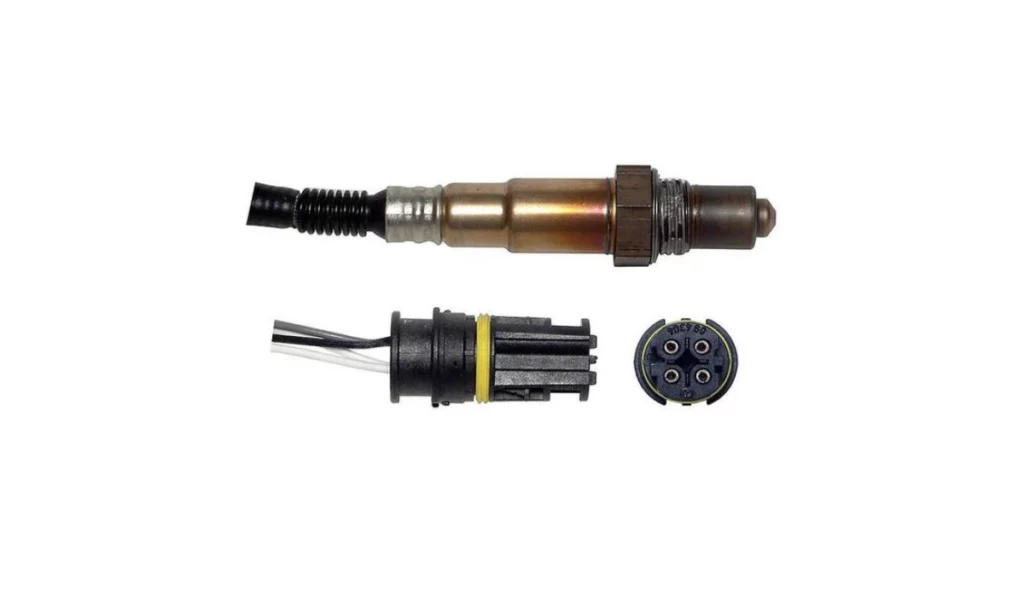
Test 02 Sensor Voltage
Use a multimeter to measure the sensor’s voltage while the engine runs. The voltage should fluctuate between 0.1V and 0.9V, depending on the engine condition. With the engine idling, the voltage signal from the O2 sensor in Bank 2 should fluctuate around 0.35V—0.55V as the air-fuel mixture oscillates between rich and lean conditions. A steady voltage or lack of fluctuation indicates a faulty sensor. Accurate sensor readings are vital for engine performance and emissions control.
Check O2 Sensor Readings
Use an OBD-II scanner or similar tool to observe the sensor’s oxygen level readings when the engine runs. These readings should fall within a specific range, indicating proper oxygen levels in the exhaust gasses. Consistent or abnormal readings may suggest a faulty sensor or other issues affecting engine performance and emissions control.
Examine the Air Filter and Intake System
Inspect both the air filter and intake system. If the air filter is clogged, it restricts airflow, leading to a richer air-fuel mixture. On the other hand, if the intake system is leaking, excessive air can enter, resulting in a leaner air-fuel mixture.
Both situations can lead to improper combustion and an uneven exhaust gas composition, which the O2 sensor detects. Proper maintenance and inspection of the air filter and intake system are important for optimal engine performance and emission control.

DIY O2 Sensor Replacement: A Solution to the P0150 Code
After diagnosing the issue with the P0150 code, the next essential step is fixing it by replacing the malfunctioning O2 sensor. Though straightforward, this task demands meticulous attention to detail. This comprehensive guide provides step-by-step instructions for a smooth replacement.
Safety above anything
- Work in a well-ventilated area
- Allow the engine to cool down.
- Disconnect the battery
- Be aware of potential fire hazards, especially near the exhaust system components.
- Wear your PPE, such as work gloves and goggles
Tools and Equipment Required
- Hydraulic jack
- Jack stand
- Safety goggles
- Gloves
- Wire brush
- Screwdriver set
- Socket wrench set
- Spanner set
- Oxygen sensor wrench
- Torque wrench
Step-By-Step Instructions
Step 1 — Locate the Oxygen Sensor in Bank 2
The O2 sensor in Bank 2 is typically located upstream of the catalytic converter, near the rear of the exhaust system. Consult your vehicle’s repair manual or online resources to identify the exact location of the sensor for your specific vehicle and model.
Step 2 — Disconnect the Electrical Connector
Locate the electrical connector attached to the oxygen sensor. It may be secured with a locking tab or clip. Carefully disconnect the connector from the sensor, taking note of the routing of the wiring harness. Avoid any damage during the replacement process.
Step 3 — Remove the Oxygen Sensor
Once the electrical connector is disconnected, remove the O2 sensor from the exhaust pipe. Depending on your vehicle, you may need a wrench, oxygen sensor socket, or a specialized tool to loosen and remove the sensor.
Step 4 — Clean the Mounting Area
Use a wire brush to thoroughly clean the threads on the exhaust pipe where the O2 sensor was mounted. Remove debris, rust, or built-up deposits to ensure proper seating and threading for the new sensor.
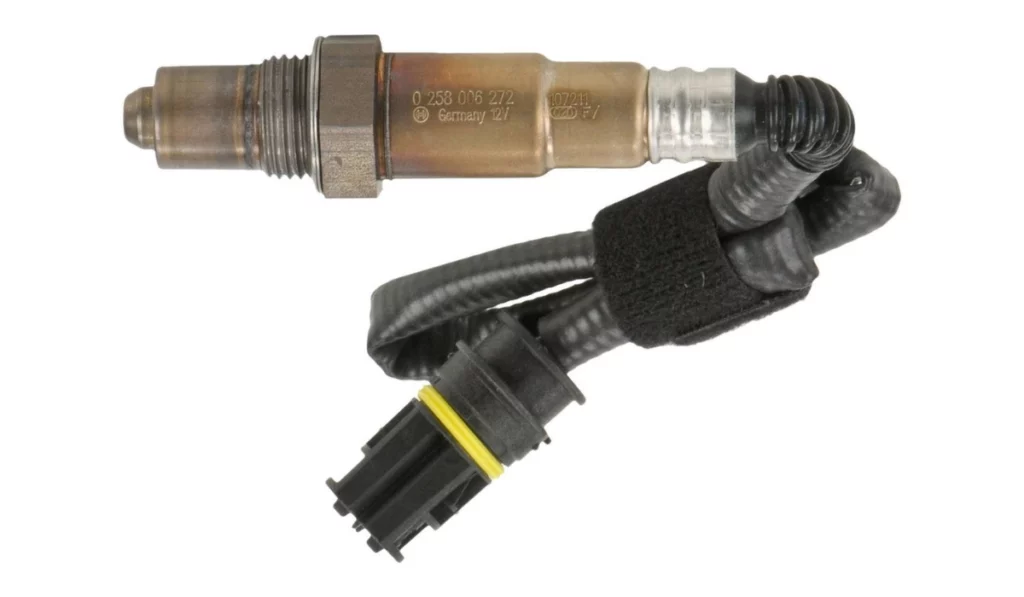
Step 6 — Install the New Oxygen Sensor
Carefully thread the new oxygen sensor into the exhaust pipe opening. Ensure it is properly seated and tightened to the specified torque value. Overtightening or under-tightening can lead to leaks or sensor damage. Refer to your vehicle’s repair manual for the correct torque specification.
Step 7 — Reconnect the Electrical Connector
Once the new O2 sensor is securely installed, reconnect the electrical connector. Make sure it is properly seated and locked into place.
Step 8 — Clear Trouble Codes
After the oxygen sensor replacement, use an OBD-II scan tool to clear any stored trouble codes related to the P0150 code or O2 sensor issues.
Step 9 — Verify Proper Operation
Start the engine and allow it to run for a few minutes. Check if the check engine light remains off, indicating that the new oxygen sensor functions correctly.
Can I use aftermarket oxygen sensors to replace a faulty sensor?
Yes, you can use aftermarket oxygen sensors as replacements for faulty sensors. Ensure compatibility, choose a reputable brand, follow proper installation instructions, and be prepared for any necessary calibration.
Resolve Wiring Problems
If the wiring connected to the O2 sensor is compromised, consider addressing any damaged wires, connectors, or harnesses to retain proper electrical connectivity. This solves common issues such as short circuits, open circuits, or physical damage, which can affect the connection between the sensor and the Powertrain Control Module (PCM).
Address Exhaust Leaks
If you identified any exhaust leaks during the diagnostic procedure, these must be repaired before replacing the oxygen sensor. Exhaust leaks can introduce outside air, causing false readings and premature sensor failure. After a thorough check, repair any leaks in the exhaust manifold, pipes, connections, or catalytic converter to ensure a sealed system.

Replace the PCM
If tests show a problem with the PCM or its communication with the O2 sensor, try reprogramming the PCM to fix any communication issues. But if the P0150 code keeps coming up after reprogramming, it means there’s a fault in the PCM itself. In that case, you’ll need to replace the PCM with a new one.
Maintenance Tips
After addressing issues that lead to the P0150 code, follow these maintenance tips to keep your car free from such trouble codes. These practices nourish the health of your vehicle’s engine and help it run longer.
Follow Manufacturer Recommendations
Adhere to the manufacturer’s recommendation to maintain the efficiency of your vehicle’s combustion process. This includes replacing spark plugs, air filters, and fuel filters. This helps ensure that the oxygen sensors receive accurate data and function correctly.
Oxygen Sensor Inspection
Regularly inspect oxygen sensors for cracks, discoloration, and buildup. Replace sensors with signs of deterioration to prevent trouble codes. More importantly, check if the wiring harness is damaged, short, or exposed to elements. It must be repaired or replaced to maintain healthy communication between the sensor and the PCM.
Inspect the Exhaust System
Periodically check the exhaust system for leaks, damage, or loose connections. Exhaust leaks can introduce external air into the system, causing inaccurate O2 sensor readings and potentially triggering trouble codes like the P0150.
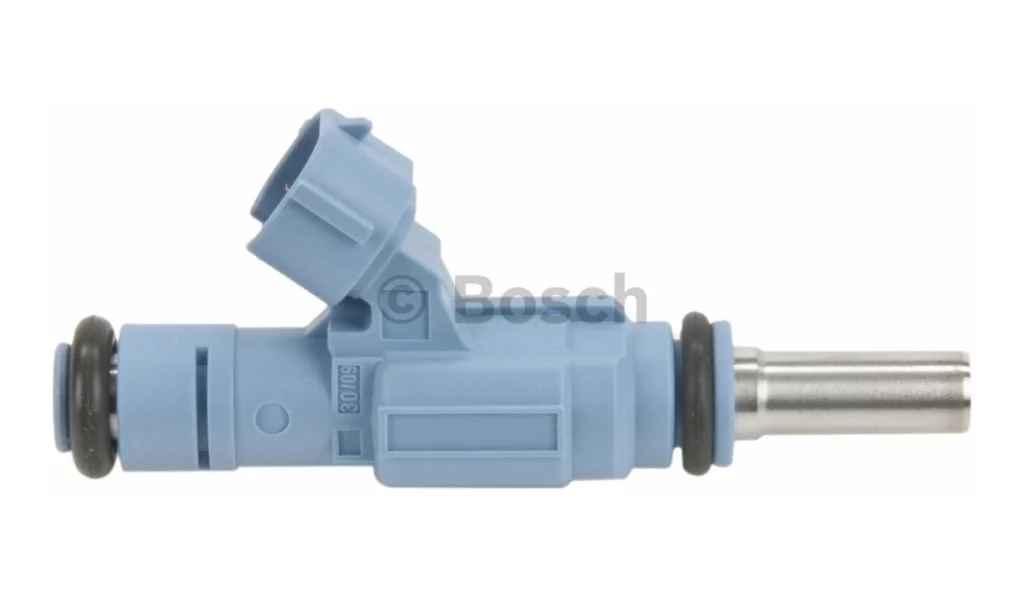
Use High-Quality Fuel
Use high-quality fuel to help reduce the buildup of contaminants and deposits in the fuel system and engine. This can contribute to the overall efficiency. Furthermore, it boosts the longevity of the oxygen sensors and other emissions components.
Address Check Engine Light
If the check engine light illuminates, it’s important to have the issue diagnosed and addressed as early as possible. Ignoring warning lights can lead to further damage or complications, potentially affecting the oxygen sensors and other components.
Fix the P0150 Code with Top-quality O2 Sensors from eEuroparts.com
Improve your vehicle’s performance and efficiency with eEuroparts.com’s genuine and OEM oxygen sensors. We offer high-quality solutions for issues like the P0150 code, ensuring optimal vehicle operation.
At eEuroparts.com, we understand the importance of quality components for vehicle performance. That’s why we carry a wide selection of oxygen sensors to meet the needs of car enthusiasts.
If you get the P0150 code, our inventory includes oxygen sensors from reputable brands to fix the problem. Oxygen sensors monitor the air-fuel mixture, allowing your engine to run efficiently and reduce emissions.
Check out our selection of oxygen sensors, maintenance parts, and engine components at eEuroparts.com. We can help enhance your vehicle’s performance and efficiency.

